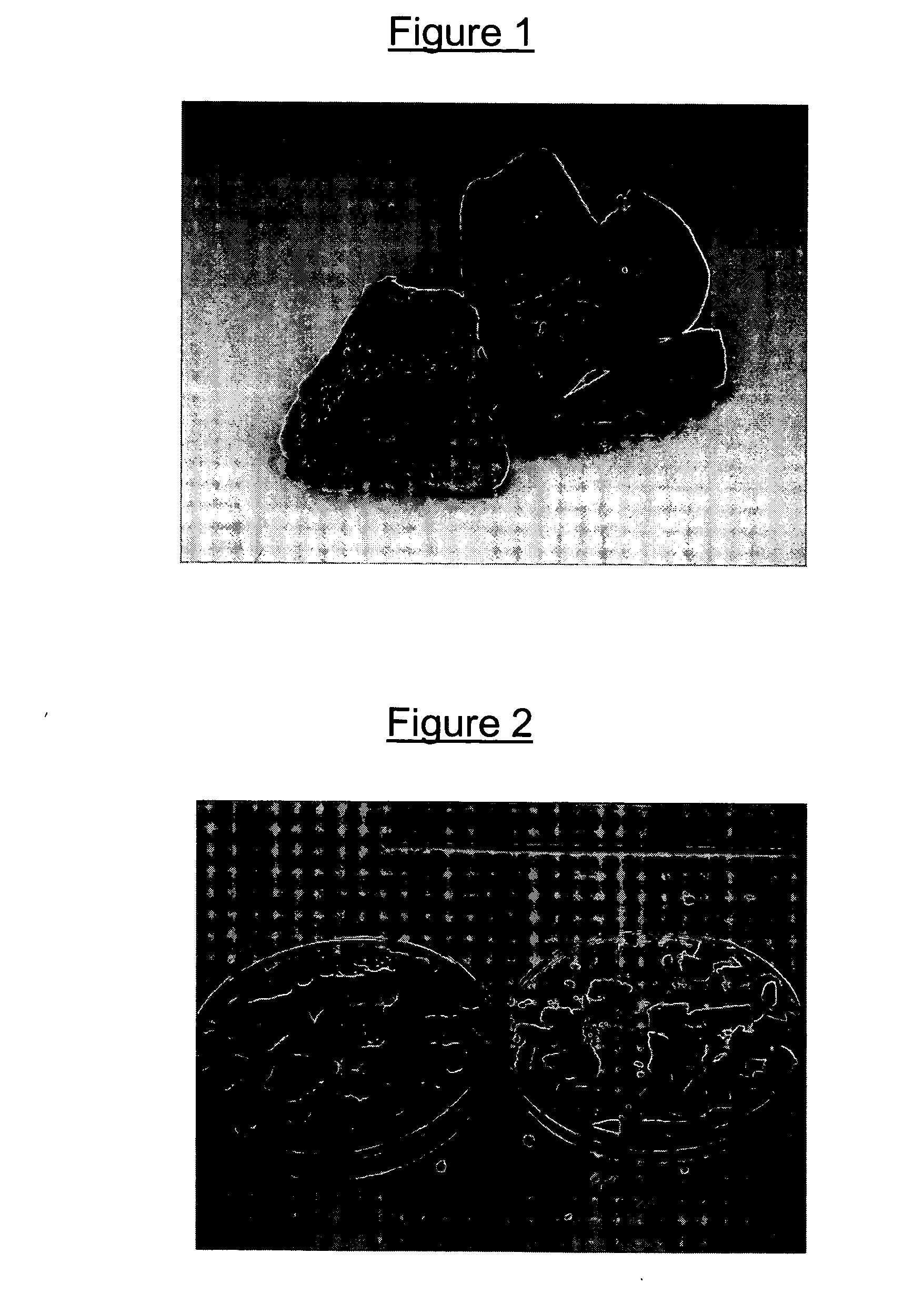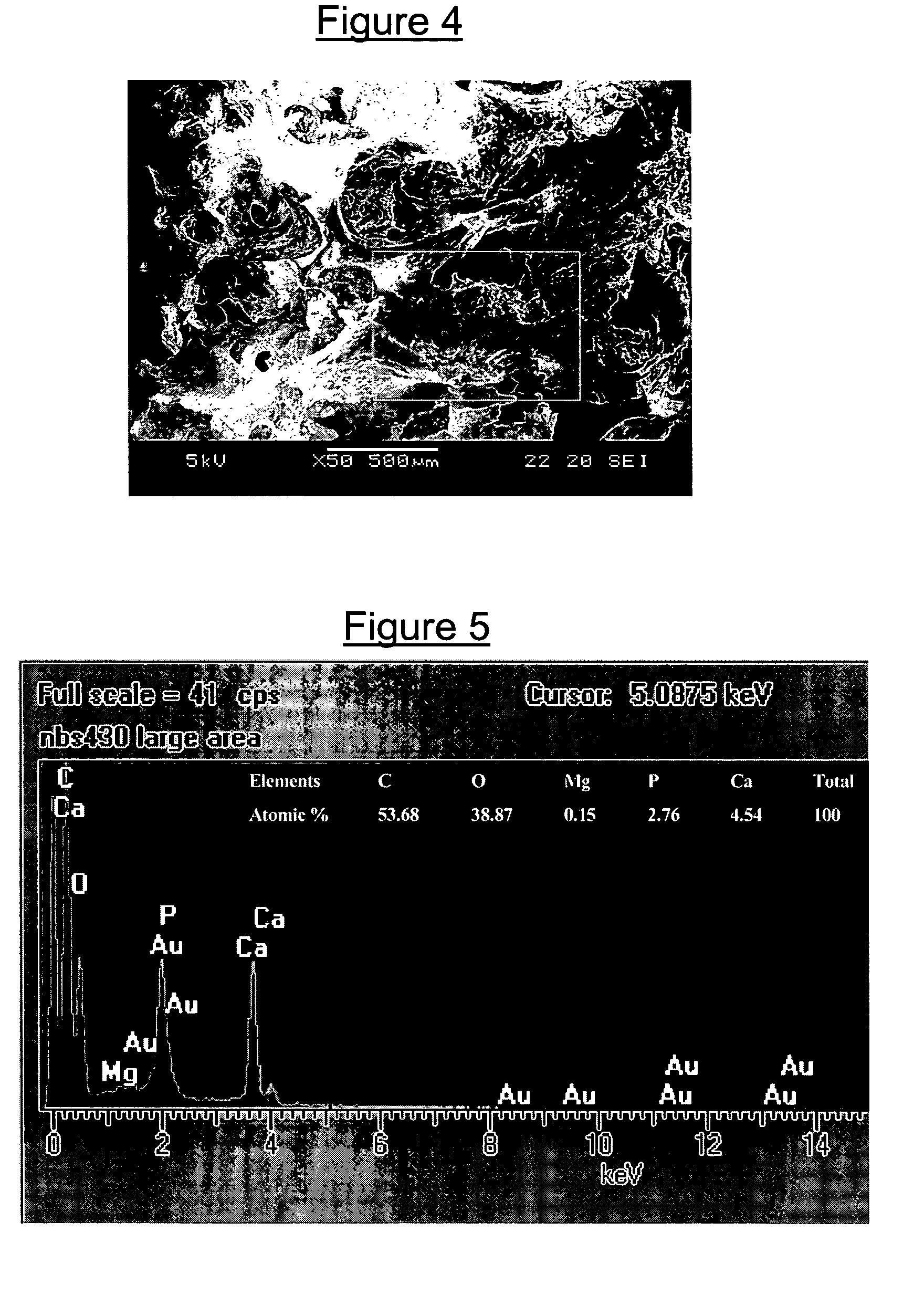Implantable biomaterial and method for the preparation thereof
a biomaterial and implantable technology, applied in medical preparations, medical science, surgery, etc., can solve the problems of donor site morbidity, need for additional surgery on the recipient, and unsatisfactory use of autografts, etc., to achieve high osteoinductivity, high osteoconductivity, and comparable mechanical strength
- Summary
- Abstract
- Description
- Claims
- Application Information
AI Technical Summary
Benefits of technology
Problems solved by technology
Method used
Image
Examples
example 1
[0122] Natural bones of essentially all vertebrates have a basic structure of hydroxyapatite (HA), formulated as [Ca10(PO4)6(OH)2]. However, crystals of HA found in biological tissues such as bone, enamel, dentin and other calcified tissues contain other atoms and ions such as acid phosphate groups (HPO42−), carbonate ions (CO32−), magnesium (Mg), fluorine (F) (LeGeros R Z., Crystal Growth Charact. 1981; 4:1-45; Rey C, et al., Calcif. Tissue Int. 1991; 49:251-258). Bone crystals either do not contain hydroxyl group or contain very few such groups, referred to as carbonate apatite rather than HA (Bonar L C, et al., J Bone Miner Res. 1991; 1167-1176). The groups of carbonate and phosphate in bone crystals are relatively unstable and very active, which result in an important role in the bone formation, mineralization and dissolution (LeGerps R Z. Tung M S., Caries Res. 1983; 17:419-429).
[0123] The majoring of synthetic HA preparation for bone substitutes are of synthetic origin and di...
example 2
Dissolution of Organic Bone
[0160] An anorganic bone is an ideal biomaterial for in vitro analysis of bone dissolution / precipitation. The anorganic porcine bone, free of organic matrix, maintains the physicochemical properties and crystalline structures as the natural bone (as shown in Example 1). However, little is known about the deposition of natural bones due to certain experimental difficulties. Thus, the aim of this Example is to investigate the dissolution / precipitation of crystalline structures from the anorganic porcine bone encountered with or without osteoblasts cells, and to emphasize various observations related to bone mineralization under the physiological conditions. The deposits contain several elements including Ca and / or P. The ratios of Ca / P are less than 1 in all deposits as the dissolution rate of each element depends on the composition of each corresponding site. The present inventors have reported that non-homogenous distribution of essential / trace elements ...
PUM
 Login to View More
Login to View More Abstract
Description
Claims
Application Information
 Login to View More
Login to View More - R&D
- Intellectual Property
- Life Sciences
- Materials
- Tech Scout
- Unparalleled Data Quality
- Higher Quality Content
- 60% Fewer Hallucinations
Browse by: Latest US Patents, China's latest patents, Technical Efficacy Thesaurus, Application Domain, Technology Topic, Popular Technical Reports.
© 2025 PatSnap. All rights reserved.Legal|Privacy policy|Modern Slavery Act Transparency Statement|Sitemap|About US| Contact US: help@patsnap.com



